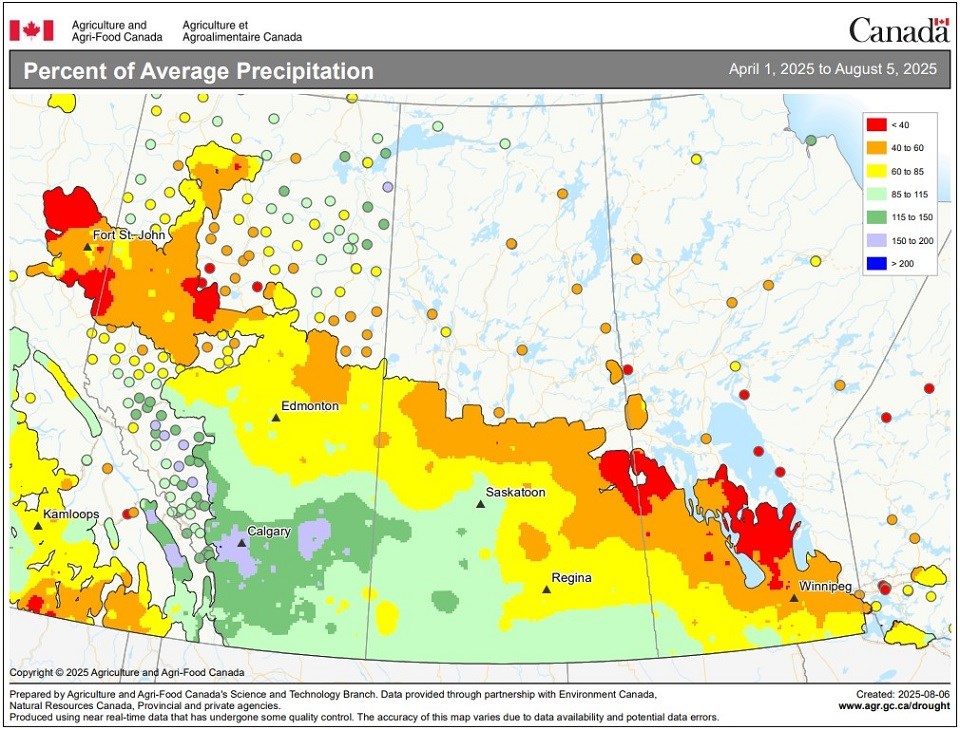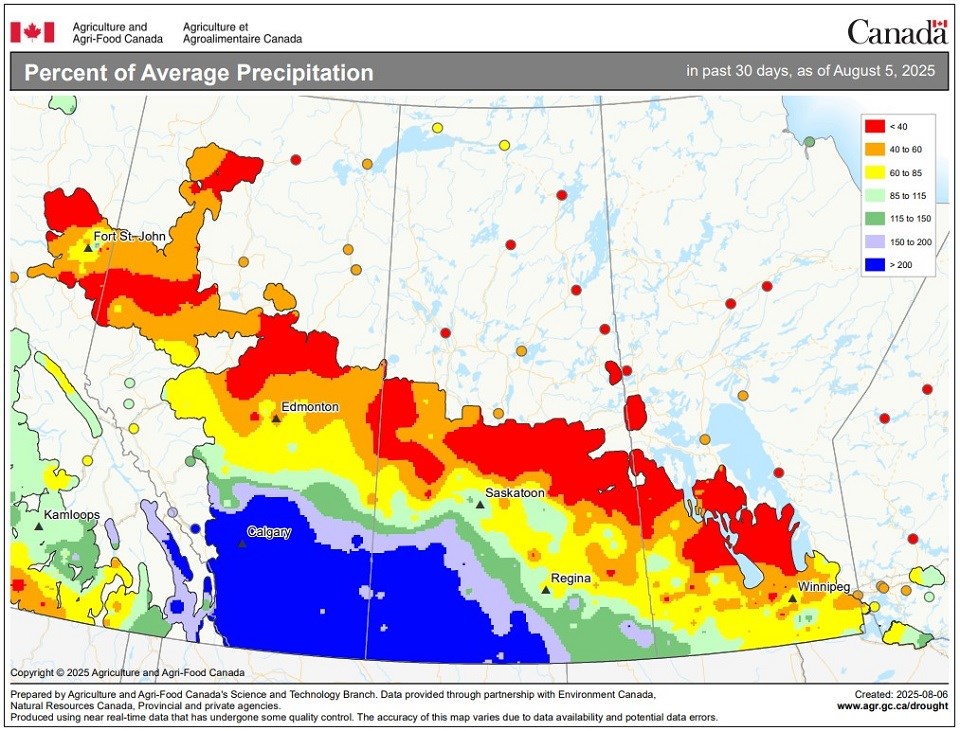It’s another unusual year for precipitation.
The northern grain belt has been uncharacteristically dry while much of the southern grain belt has recently gone from normal or below normal growing season precipitation to very wet.
Agriculture and Agri-Food Canada publishes online precipitation maps. You can pick the timeframe you want to examine and view maps for accumulated precipitation, precipitation percentiles and per cent of normal.

For the growing season from April 1 to August 4, virtually all of the northern grain belt recorded below normal precipitation. In fact, parts of the Peace River region, northeast Saskatchewan and Manitoba’s Interlake are below 40 per cent of normal for the growing season.
Much of the southern grain belt is average to above average including almost all of the region south of Red Deer and south of Saskatoon. The wettest area for the growing season is around Calgary and east with pockets at 150 per cent of normal. Regina is 60 to 85 per cent of normal. South and east of Regina, precipitation has been about average.
Part of southwest Saskatchewan and into Alberta shows on the map as having 60 to 85 per cent of normal precipitation. What the map doesn’t show is that much of that region went too long in June with very little rainfall. Many crops had already lost a lot of yield potential by the time rains returned. Some are write-offs.

The precipitation map for the 30 days leading up to August 4 also paints an interesting picture. The entire northern grain belt has remained below normal for the past month, with a lot of area at less than 40 per cent. That explains the ongoing wildfires in regions north of the grain belt.
Meanwhile, in the last 30 days, heavy precipitation has occurred in southern Alberta and southwest Saskatchewan. An area including Calgary, Kindersley, Rosetown, Swift Current and everything south has had more than two times normal.
The late rain is a mixed blessing. It’s improving pasture conditions and helping some later seeded crops. However, it is also leading to potential quality problems in crops that were nearly ready for harvest.
Yield potential is a mixed bag in Western Canada. Statistics Canada will issue a production estimate on August 28.


